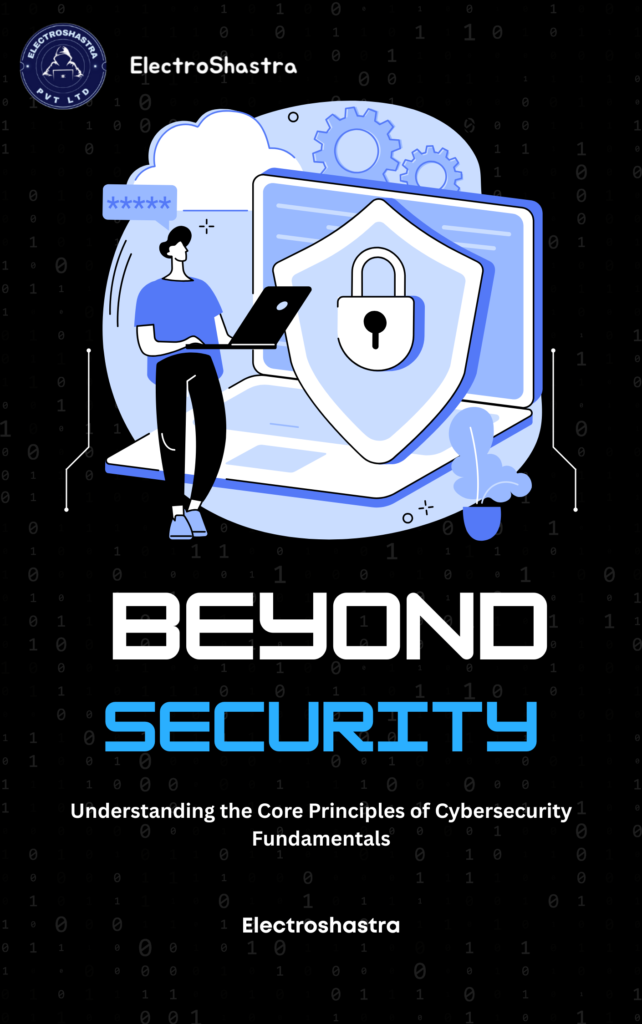Cybersecurity Fundamentals Course
Course Overview:
Cyber threats are evolving, and understanding cybersecurity is essential for protecting data, networks, and systems. This Cybersecurity Fundamentals Course provides a solid foundation in cybersecurity principles, threats, and defense strategies. Whether you’re an IT beginner, aspiring ethical hacker, or security professional, this course will equip you with the critical skills needed to identify risks, secure systems, and prevent cyber attacks.
What You’ll Learn:
- Cybersecurity Basics – Core principles, CIA Triad (Confidentiality, Integrity, Availability)
- Common Cyber Threats – Malware, phishing, DoS attacks, ransomware, and insider threats
- Network Security – Firewalls, IDS/IPS, VPNs, and secure network configurations
- Endpoint & System Security – Protecting Windows, Linux, and mobile devices
- Authentication & Access Control – MFA, password policies, and privilege management
- Web & Application Security – OWASP Top 10, SQL Injection, and XSS attacks
- Incident Response & Risk Management – Handling security incidents and reducing cyber risks
Why Enroll?
- Beginner-Friendly – No prior cybersecurity knowledge required
- Hands-on Learning – Practical labs & real-world scenarios
- Career-Boosting Skills – Essential for IT, ethical hacking, and security careers
- Stay Ahead of Cyber Threats – Learn how to prevent and respond to attacks
Start your journey in Cybersecurity and become the first line of defense against cyber threats!
About this course:
Beginners
Flexible Timing
4-8 Weeks
Theory + Hands-on Labs + Real-World Case Studies
Cybersecurity Fundamentals Modules
- What is Cybersecurity? (Definition & Importance)
- Types of Cyber Threats (Malware, Phishing, Ransomware, DDoS, Social Engineering)
- Common Cyber Attacks & Real-World Examples
- Cybersecurity Careers & Certifications (CompTIA Security+, CEH, CISSP, OSCP)
- Networking Basics (IP Addressing, Subnetting, Protocols, OSI & TCP/IP Models)
- Understanding Firewalls, IDS, IPS & VPNs
- Encryption Basics (Symmetric vs. Asymmetric, Hashing)
- Wireless Security (Wi-Fi Security Standards: WPA2, WPA3)
- Types of Malware (Viruses, Worms, Trojans, Ransomware, Spyware, Adware)
- Social Engineering Attacks (Phishing, Spear Phishing, Pretexting, Tailgating, Baiting)
- Denial of Service (DoS) & Distributed DoS (DDoS) Attacks
- Man-in-the-Middle (MITM) & Session Hijacking
- Antivirus & Endpoint Security Solutions
- Firewalls & Network Security Tools (pfSense, Cisco ASA, Palo Alto)
- SIEM (Security Information and Event Management) Tools
- Packet Capture & Analysis (Wireshark, tcpdump)
- Securing Windows & Linux Systems
- User Account Management & Least Privilege Principle
- File Permissions & Access Controls
- Hardening OS Security (Windows Defender, SELinux, AppArmor)
- Introduction to Web Security (OWASP Top 10 Vulnerabilities)
- SQL Injection, Cross-Site Scripting (XSS), Cross-Site Request Forgery (CSRF)
- Secure Coding Practices
- API Security & Cloud Security Basics
- Incident Response & Disaster Recovery Planning
- Security Policies & Compliance (ISO 27001, GDPR, NIST, HIPAA)
- Password Security & Multi-Factor Authentication (MFA)
- Risk Management & Security Auditing
- What is Ethical Hacking? (Roles & Responsibilities)
- Penetration Testing Methodology
- Reconnaissance & Footprinting (Shodan, Nmap, Whois)
- Exploiting & Securing Systems
- Setting Up a Secure Virtual Lab (Kali Linux, Metasploitable, DVWA)
- Basic Ethical Hacking with Kali Linux (Nmap, Metasploit, Burp Suite)
- Capturing & Analyzing Network Traffic with Wireshark
- Simulated Cyber Attack & Defense Scenario
- • Mock Exams & Practice Tests
- Cybersecurity Career Roadmap & Next Steps
Common Questions
Frequently Asked Questions (FAQ) – Cybersecurity Fundamentals
This course is designed for beginners who want to start a career in cybersecurity and understand basic security principles.
No prior experience is needed. Basic knowledge of computers and networking is helpful.
- Cyber Threats & Attacks (Phishing, Ransomware, DDoS)
- Network & System Security Basics
- Web & Application Security (OWASP Top 10)
- Ethical Hacking & Penetration Testing Basics
- Hands-on Labs in a Cybersecurity Lab
- Kali Linux (for penetration testing)
- Wireshark (for network analysis)
- Virtual Machines (VMware/VirtualBox) for safe practice
Yes! This course includes practical labs with real-world cybersecurity challenges.
Yes! It covers the foundational knowledge needed for CompTIA Security+, CEH, and other security certifications.
Yes! You can run most security tools on Windows, macOS, or Linux.
Typically 4-8 weeks, depending on your learning pace.
Yes! The course introduces ethical hacking concepts, penetration testing, and security tools.
Yes! Cybersecurity skills are in high demand in IT, ethical hacking, and risk management roles.
Yes! A certificate of completion is awarded upon finishing the course.
- Take an Advanced Cybersecurity course
- Learn Penetration Testing (CEH, OSCP)
- Prepare for CompTIA Security+, CISSP, or other certifications

Classroom Traning
We offer customized VILT (Virtual Instructor-Led Training) sessions at your convenient hours to provide effortless training.

Online Training Class
One can also opt for the prerecorded video sessions available at any point of time from any particular location.

Corporate Training
Hire a preferred trainer at your work premises at your chosen time slots and train your employees with full efficiency.


